Junco vs Chickadee: Here’s How to Tell the Difference
Updated: Dec. 08, 2022
Here's how to tell the difference between a junco vs a chickadee, two beloved small songbirds with similar black and white plumage.
Chickadee vs Junco
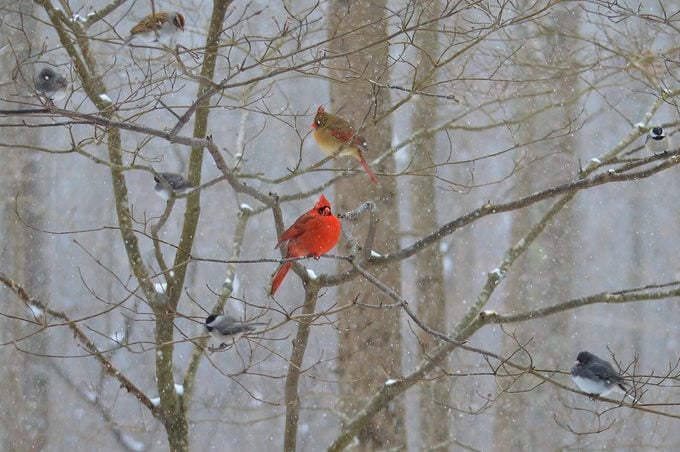
At first glance, dark-eyed juncos and chickadees can look quite similar. They’re around the same size and shape, their plumage includes shades of gray and white, and you might find both of them around bird feeders in your yard. But there are plenty of differences to help you become a master at correctly ID’ing these species—here’s how to tell a junco vs a chickadee apart.
Psst—here’s how to tell the difference between a nuthatch vs a chickadee.
Dark-Eyed Junco
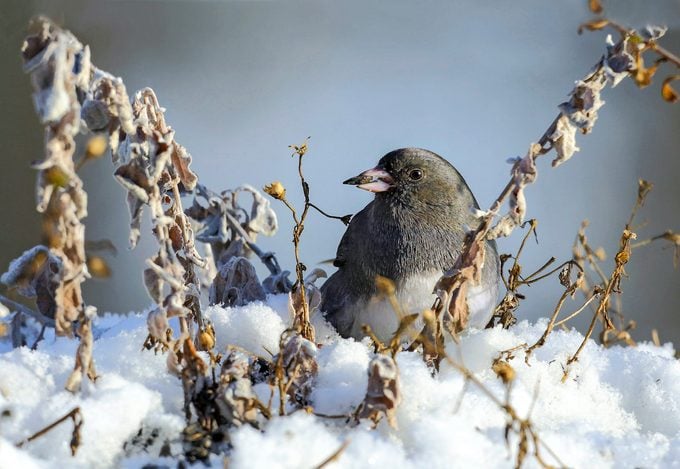
If you see a speck of dark gray hopping around beneath your feeders in winter, chances are good that you’ve spotted a dark-eyed junco. These rosy-billed birds like to eat off the ground, dining on seed other birds have dropped or seeds from your native plants. They’ve been lovingly nicknamed “snowbirds” because they’re commonly sighted in winter throughout North America. While some stick around in spring on the Northeast, Northwest and California coasts, most head farther north to nest.
Find out how to attract more juncos to your backyard. While you’re at it, you might appreciate these adorable junco bird pictures, too.
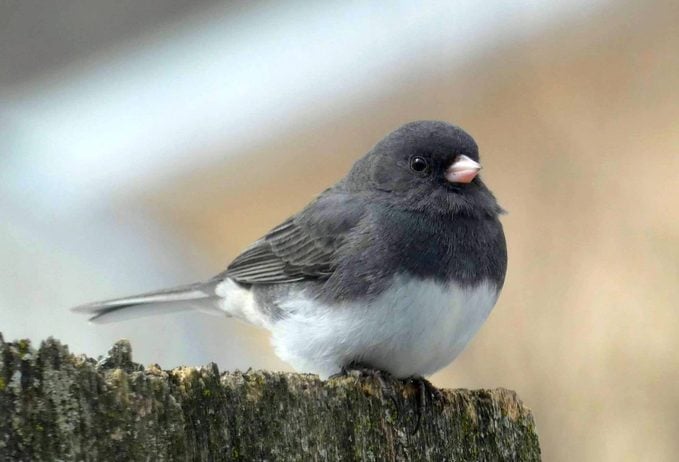
Trademark junco traits include slate-gray upperparts and a white breast, as well as a pinkish-colored beak. Oregon juncos, commonly found in the West, have a chestnut-colored back and rust-colored plumage on their sides. Female dark-eyeds are usually a little larger than males, and their coloring strays closer to brown than that of their mate. Juvenile juncos are lighter-colored than the adults, and their plumage might have streaks.
Discover more cool facts about juncos.
Chickadee
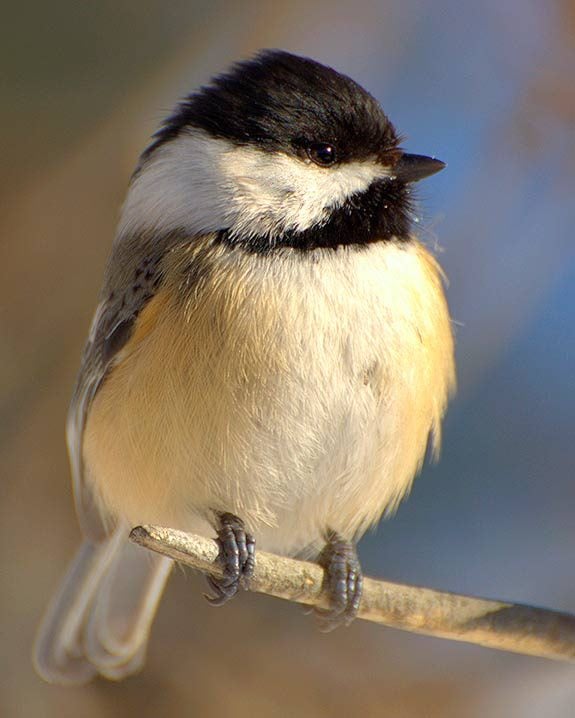
If you hear a chipper “chick-a-dee” song, that’s a chickadee announcing its presence! These perky backyard residents are frequently spotted at bird feeders, especially in winter—they don’t feed off the ground quite as frequently as juncos. You might also find them clinging to a dried seed-bearing flower in your garden, nibbling on the seeds. Unlike juncos, chickadees don’t migrate; you’ll be able to find them year-round.
Fans of the friendliest backyard fliers will love these incredibly cute chickadee pictures.
Several species of these cheery songbirds call North America their home, but based on their plumage, it’s not too hard to identify a junco vs a chickadee. Chickadees tend to have dark “caps” on their heads with white faces, and they also boast black bibs. In general, their coloring is typically a cloudy gray as compared to the dark-eyed junco’s slate black, and their breast is more cream-colored than the junco’s white. In addition, the chickadee’s beak is thinner and differs in color from the junco’s pink beak.
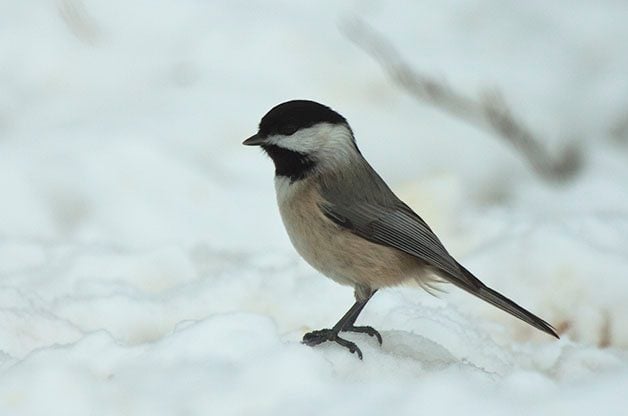
Depending on where you live, be on the lookout for the various types of chickadees in your backyard. Mountain chickadees (found in coniferous forests from Canada to Texas) feature a white stripe on their heads, while chestnut-backed chickadees (found along the Pacific coast) feature more brown on their backs than their largely gray relatives. Black-capped (found throughout most of North America) and Carolina chickadees (found in the Southeast and lower Midwest) look so similar they can be tough to tell apart.
The Mexican chickadee can only be found in the Chiricahua Mountains and the Animas Mountains, while the gray-headed chickadee is trickier to find still—it lives in Alaska’s Arctic Circle!
Next, discover the differences between downy and hairy woodpeckers.




















